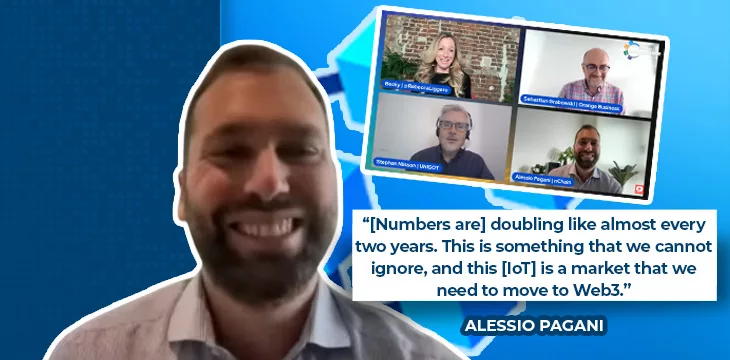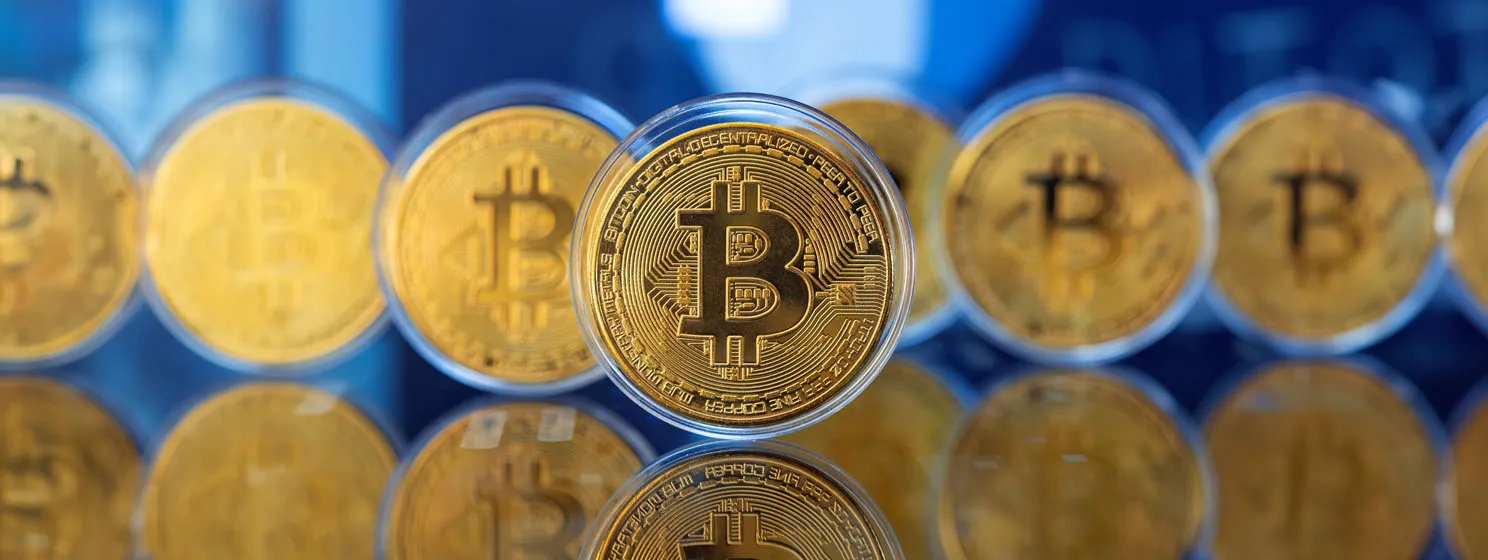|
Getting your Trinity Audio player ready...
|
It seems that the world is in the midst of an explosion—a metaphorical one, of course, which was the main topic of discussion in the latest installment of the CoinGeek Roundtable. On the show’s sixth episode, Becky Liggero and industry experts tackled the ongoing boom of the Internet of Things (IoT) and what it meant for the future.
The expert panel
Joining Liggero for the lively discussion were three leaders in IoT and blockchain technology. First was Sebastian Grabowski from Orange Business Services, an expert not only on IoT but on smart cities and edge enterprise architectures.
Also part of the panel was Stephan Nilsson, the CEO and co-founder of UNISOT. Nilsson’s company is geared towards building supply chain solutions and focuses on supply chain traceability and sustainability.
Rounding out the panel was Alessio Pagani. He is the Research Director of nChain, a powerhouse in blockchain research and development with thousands of patents under its name.
‘It’s a market that is exploding’
In its simplest sense, IoT refers to pieces of technology or “things” that can communicate and exchange data through the Internet. This includes a nearly incomprehensible amount of hardware worldwide, even now, as the industry is still relatively young.
When asked about what we can expect to see in five or ten years, Pagani likened the industry’s movement to an explosion.
“All the devices are expanding, and this is a market that is exploding,” he said, adding that there will be an expected 30 to 40 billion IoT devices by 2025. “This number is doubling like almost every two years. This is something that we cannot ignore, and this is a market that we need to move to Web3.”
Grabowski thinks that the estimation might even be on the low end since there is a tendency for smart devices to be lumped together and counted as just one system.
“I think that it’s even hard to estimate how much there is currently and how much there is going to be in the very soon future. Billions. Trillions,” Grabowski explained.
And when blockchain and IPv6 are added to the mix, Nilsson believes there is even more incentive to put IoT devices in even more places, driving the estimates upwards.
IoT, blockchain & supply chain
One question from the audience during the livestream dealt with blockchain and how it can help with the security and privacy of IoT devices.
Pagani, representing a company whose bread and butter is blockchain, explained that they usually define security using the CIA triad of Confidentiality, Integrity, and Availability.
“Blockchain already covers, by default, availability and integrity of data because it’s an immutable ledger and transparent ledger,” he said. He then went on to explain that while confidentiality is a bit more complicated, there exist some cryptographic techniques that allow for the storage and encryption of data.
Another viewer asked how IoT can be used in the supply chain space. Nilsson answered that there are definitely a lot of initiatives that deal with different blockchains, IoT, and supply chains. However, with the diversity of options available, it’s not a simple task to make things work.
“The problem I see there is that most companies are trying to use private blockchains,” Nilsson said, explaining that these are not really blockchains but rather replicated databases. “That does not work. So that’s the difference here, that you have to connect to a supply chain. You need to use a public blockchain.”
‘A really, really big revolution’
Of course, when people speak of blockchain, talk of payments is usually not far behind. However, not all blockchains are created equal, and certainly not all are capable of handling what many call the payments of the future: micropayments.
On their own, IoT devices can neither receive nor send payments. But add blockchain to the mix, and you enable new aspects of these devices that weren’t possible otherwise. One example given by Pagani is installing a large device in a place where millions of people may need information that the device holds.
“Everyone pays a cent of a cent, so it’s nothing for you, but for the company providing those devices, it’s a new business model,” Pagani said. “Of course, to do that, you need a blockchain like BSV that allows for micropayments. It’s very convenient, it’s cheap, it’s fast, and this is like a technique for creating new business cases.”
Grabowski, on the other hand, describes micropayments as a “really, really big revolution” in the market. He says that normally when you have companies that own devices or censors, they sell the data gathered to the government or another private company. Blockchain simplifies the entire process and provides access to more parties.
“A big problem with most supply chains today is that they are only made for the biggest companies,” Nilsson chimed in. “But by using the BSV Blockchain that is very scalable and very cost-efficient, that allows us to actually involve the small actors in the edge of a supply chain and buy it.”
This way, Nilsson said that even small fishermen and farmers have the incentive to collect data, an initiative that he called “gamifying data collection.”
To regulate or not to regulate?
So where does government fit in regarding the future of IoT and blockchain? Should they have a hand in regulating these industries, or should they keep their hands off?
Grabowski’s response to this question was a simple “I don’t know.” After all, he explained that the situation now is far different from five or 20 years ago. The times have changed, but it is not necessarily more obvious when it comes to determining whether government or private corporations are in control.
Meanwhile, Nilsson tells the government to stay away and do as little as possible.
“The blockchain was created by Satoshi Nakamoto, and it was actually created as a system that was completely legal, compliant with all international laws,” Nilsson conveyed. “So we already have all the laws that are needed to run blockchain and to use blockchains. We don’t need any new laws for that.”
Aside from the topics above, CoinGeek Roundtable also touched on 5G, IPv6 integration, and many more.
Check out the previous Roundtable videos on CoinGeek’s YouTube channel.
Watch: CoinGeek Roundtable with Joshua Henslee on AI, ChatGPT, and Blockchain

 06-30-2025
06-30-2025 





